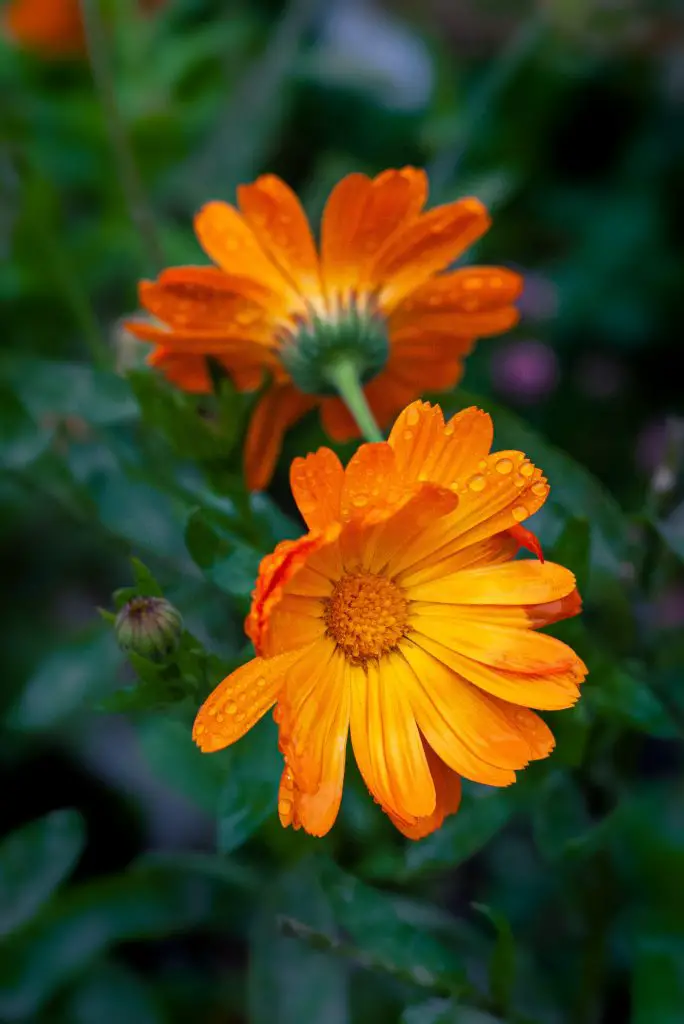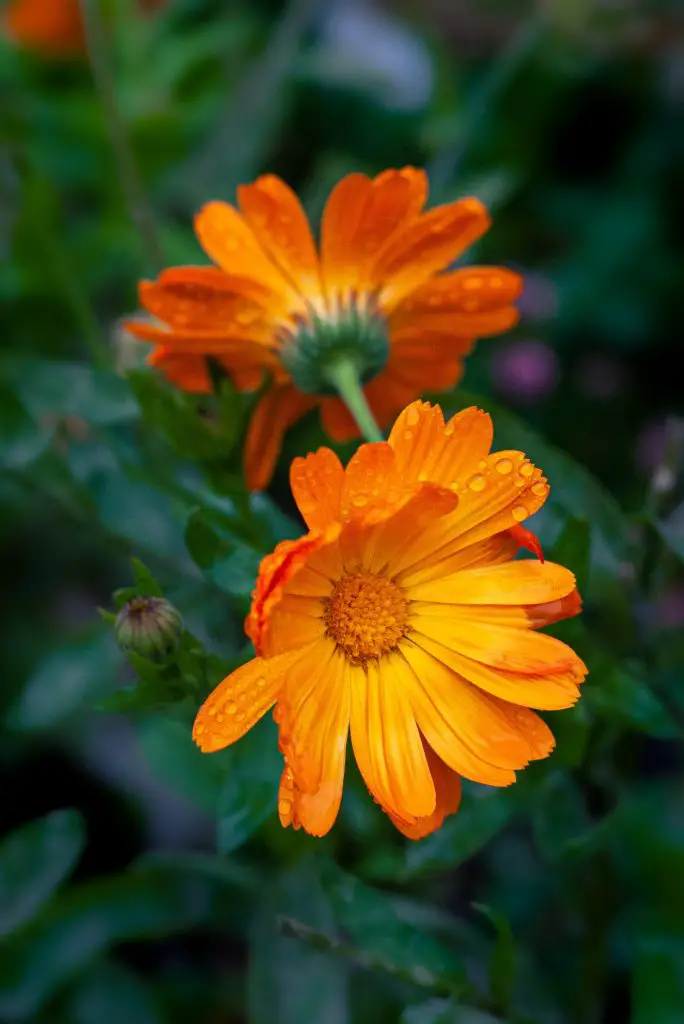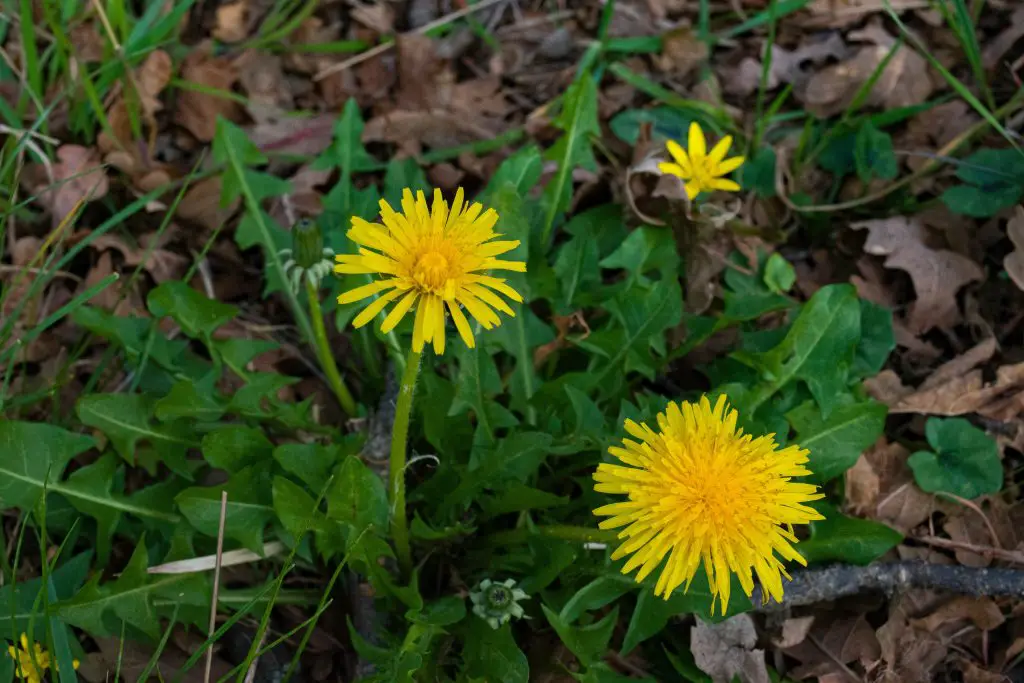Is Calendula The Same As A Dandelion? Calendula and dandelions are some of the most common plants you find in your garden. Both are prolific plants that will spread within your garden and some people consider both of the plants weeds. But are they actually just the same species or are they completely different? What’s the difference?
Calendula and dandelions are distinctly different plants that both belong to the Astor family or Daisy family. Both plants will spread relatively easily in most gardens by seed, however, the dandelions create a distinct spherical structure of seed that is designed to be spread by wind pollination. This structure is created after the plant produces its distinctive yellow flower. Calendulas also produce a yellow flower but there are also some varieties that are orange.
The other distinctive feature of dandelion plants is that they have a relatively deep taproot which is difficult to remove physically from the ground and will often be snapped in the process of removing it which means that the plant will eventually return.
The other way that you can tell the difference between dandelions and Calendula is by using the leaf shape. Dandelions have a distinct jagged leaf shape that generally hugs fairly close to the ground within half an inch or so whereas Calendulas have a leaf structure that has smooth edges and is usually a little bit lighter in color. These leave tend to sit up a little bit more from the ground, typically 2 inches or so above it.

Dandelions are well renowned for invading lawns as they compete well with grass in established lawns. However, in my experience, Calendula generally does not seem to invade lawns very much but they will spread within a garden bed relatively quickly due to their rate of self-seeding.
If you want to avoid having these plants spreading throughout your garden it is important to get rid of them as soon as you see any flowers if not earlier because if you allow them to flower they will produce seeds. This will extend the problem into the following year. However, some people really like using Calendula as a ground cover on an annual basis and are happy to let them run to seed and cycle through the year.
How To Grow Calendula At Home
Calendula are generally plants that are not often sold as mature plants in garden nurseries at least in the area that I live in. As such they tend to be plants that are only available as seeds. As you might expect from the information above Calendula will grow from seed relatively quickly and easily so you don’t need to be terribly fussy about how you grow them they can be simply sprinkled onto a garden bed and they will appear over time.
However, if you do want to get these plants flowering earlier in the season you can grow them in seed trays indoors. If you’re going to plant Calendula start by filling a seed tray with good quality seed raising mix and firm the soil into the seed tray to create solid plugs within each cell. The advantage of doing this is that you will be able to transplant the seeds without having the soil around the roots fall apart which reduces root disturbance.

The seeds should be planted at a depth of approximately a quarter of an inch in the individual cells with 2 to 3 seeds going into each cell to ensure that you have plants appearing in every single cell. Once the seed tray has been planted out the next step is to place the seed tray in a warm location that gets a reasonable amount of light throughout the day.
Seeds will typically take around 6 weeks to reach the point where they are large enough to plant out into the garden. This should typically be done once the weather is beginning to warm up in early to mid-spring.
When planting the seedlings out into the garden it is important to select a location that gets at least 6 to 8 hours of sun per day to maximize the production of flowers. The plants don’t mind being relatively crowded so if you do want to use these plants to occupy and dominate a section of your garden I would suggest planting them approximately 3 to 5 inches apart in a grid.
If you allow them to flower they will self-seed the following year and completely cover that area out competing most other plants. In terms of ongoing maintenance, there is very little to do with Calendulas as they will grow quite happily without any intervention from you apart from maybe watering them in the height of summer if it is extremely hot.

How To Control Dandelions
Unlike Calendula, Dandelions are generally considered to be a weed by most gardeners, and controlling them can be challenging particularly if they have become established and are beginning to pop up everywhere in your lawn. The biggest indication that you have a large volume of dandelions in your lawn is when they flower in spring they will produce spindly flower stalks that will rise up approximately 4 to 6 inches above the ground and produce a yellow flower.
To control the plants it is important to get rid of these flower stalks before they open. The easiest way to do this is to simply mow your lawn. However, to remove the dandelions from your lawn the easiest way is to use feed and weed which is a product designed to both feed the lawn and selectively kill broadleaf weeds species such as dandelions.
Because this product is not a 100% herbicide it is not as effective as using something like roundup so you do need to apply it multiple times throughout the year to get on top of the dandelion problem. Feed and weed is a product that is available as a spray in liquid form that is designed to plug into your garden hose allowing you to spread herbicide around on your lawn quickly and easily.

However, the product also comes in a powder form which does take longer to apply but I generally find is much more effective. I believe that the reason that this is the case is that the powdered version hangs around on the leaves of a plant for longer and therefore is taken up more readily.
You will find the first signs that this product is working will be when the leaves of the plant begin to blacken which usually takes a few days. Once the initial plants have died off it is a good idea to reapply the feed and weed every 6 weeks or so to ensure that you get on top of the population of dandelions.
This method will not completely eliminate dandelions but will certainly control them to a large extent giving you a more consistent lawn.
I hope you found this article useful and have great success controlling your tell Calendulas and Dandelions in your garden. If you have any additional comments or questions please leave them in the section below.
Relevant Articles
Should I Cut Weeds Before Spraying Weed Killer?
How To Prevent Weeds From Growing
Are Calendula And Marigold The Same Thing? (How Do You Tell The Difference?)
Are Calendula Deer Resistant? (And How To Protect Them)
